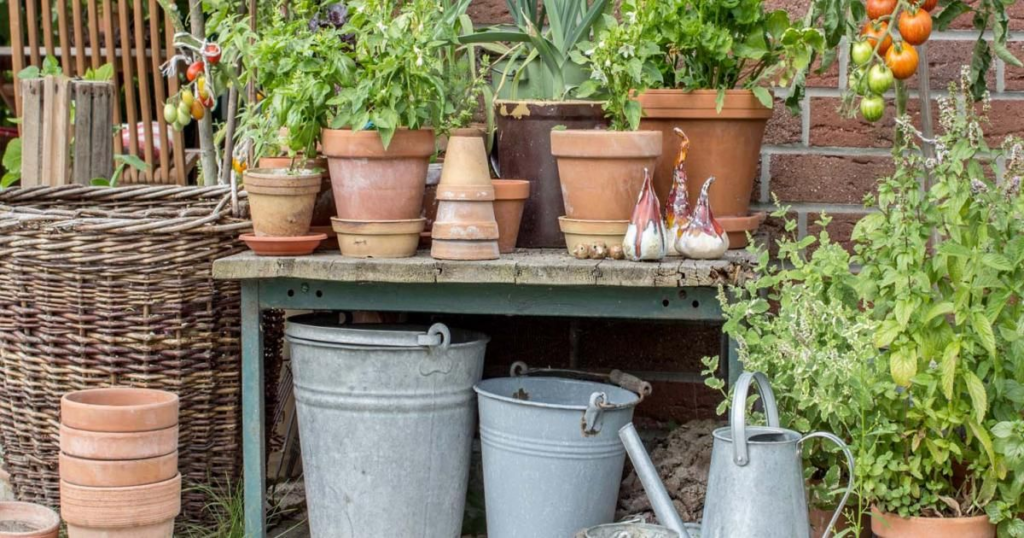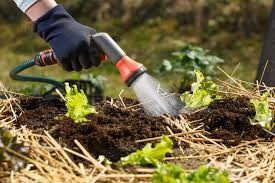Watering your vegetable garden efficiently isn’t just about conservation—it’s a practical approach that saves you time, money, and effort while helping your plants thrive. Here are 10 expert tips to optimize your watering routine and ensure your crops get the best care.
- Water Selectively
When watering by hand, focus on plants that truly need it. To check moisture levels, dig a small hole near the roots or simply stick your finger into the soil. If the soil feels cool and damp, there’s no need to water, allowing you to conserve water and prevent overwatering.

- Water at the Right Time
The timing of your watering can significantly impact how much moisture your plants absorb. Early morning is the best time to water, as it gives crops time to take in moisture before the heat of the day causes evaporation. Watering early also allows any moisture on the leaves to dry before nightfall, reducing the risk of fungal diseases and slugs. - Aim Carefully
When watering by hand, direct the water flow at the base of plants, where it’s most needed. This prevents water from evaporating off the foliage and promotes deep root growth. Instead of frequent, shallow waterings, aim for a deep soaking every now and then to encourage a stronger root system.

- Trap Water Efficiently
You can create miniature reservoirs by sinking plastic pots or upturned bottles next to water-hungry plants like squash. This setup directs water straight to the root zone, reducing surface runoff and ensuring that moisture reaches the plants effectively. - Irrigate Efficiently
If you prefer an automated watering system, consider drip irrigation or leaky hoses. These systems deliver water directly to the ground, minimizing waste and ensuring the roots get the moisture they need. Set up a timer and adjust watering based on weather conditions to avoid overwatering when it rains. - Choose the Right Pots
Clay and metal pots lose moisture quickly, making them less ideal for long-term plant care. Instead, opt for plastic or glazed pots, which retain moisture better. Group pots together to create shade at the root level, reducing evaporation and helping plants stay hydrated longer.

- Add Organic Matter
Incorporating organic matter, such as well-rotted compost or manure, into your soil improves its moisture retention. Organic material helps the soil absorb and hold water more effectively. In summer, apply thinner layers that can be easily worked into the soil, and thicker layers in winter to protect the soil from drying out. - Mulch Regularly
Mulching is one of the best ways to conserve moisture in your garden. A layer of mulch, such as compost, grass clippings, or bark, slows evaporation and keeps the soil cooler. Apply mulch at least two inches thick to moist soil and top it up throughout the growing season to maintain moisture levels. - Collect Rainwater
Rainwater is often the best option for your plants. Set up rain barrels to capture water from your roof, greenhouse, or shed. By storing rainwater, you not only save on your water bill but also provide plants with water that’s free from chemicals often found in tap water.

- Control Weeds
Weeds compete with your vegetable plants for moisture and nutrients. Regularly remove weeds, especially the deep-rooted perennials like bindweed or ground elder. Annual weeds can be simply hoed off, but perennials require deeper digging to prevent them from coming back.
By implementing these smart watering techniques, you’ll enjoy healthier plants and a more efficient garden. Let us know your own water-saving tips, especially if you garden in areas with limited water. We’d love to hear how you make every drop count!
